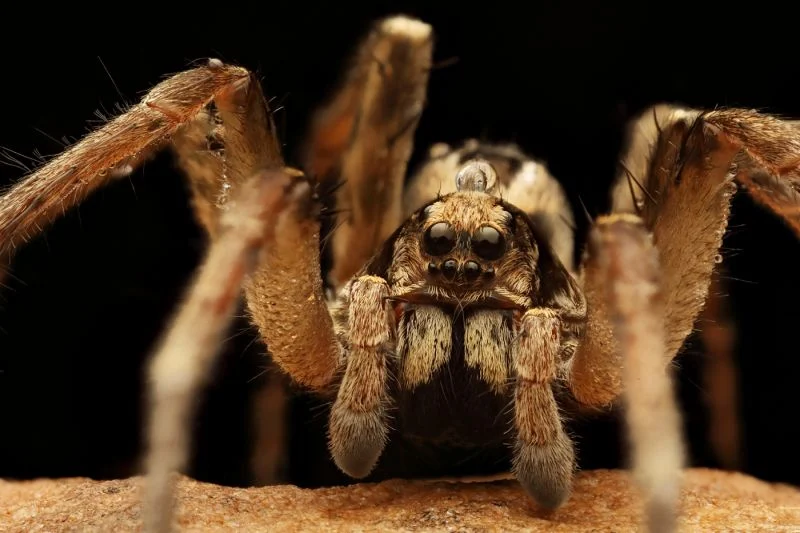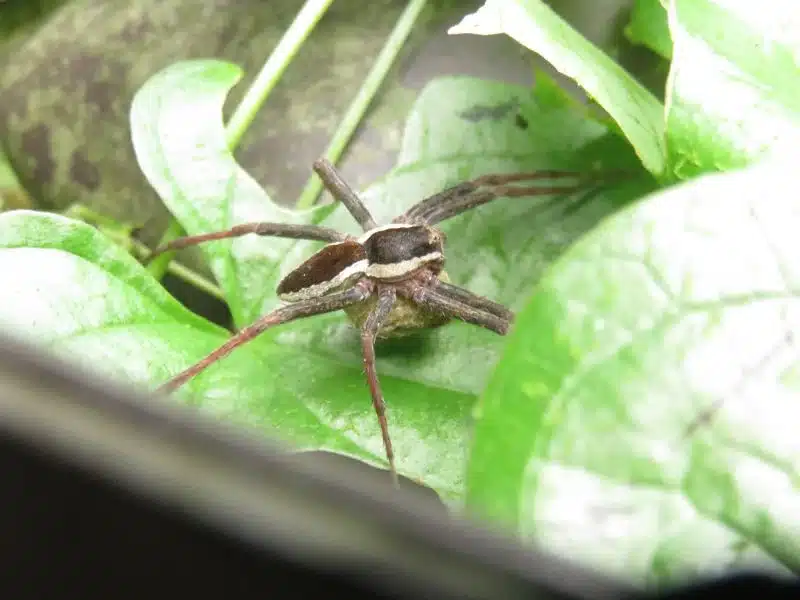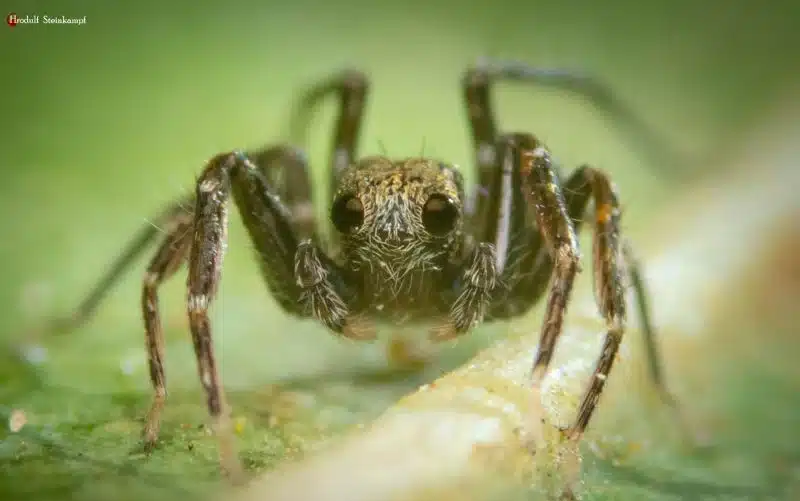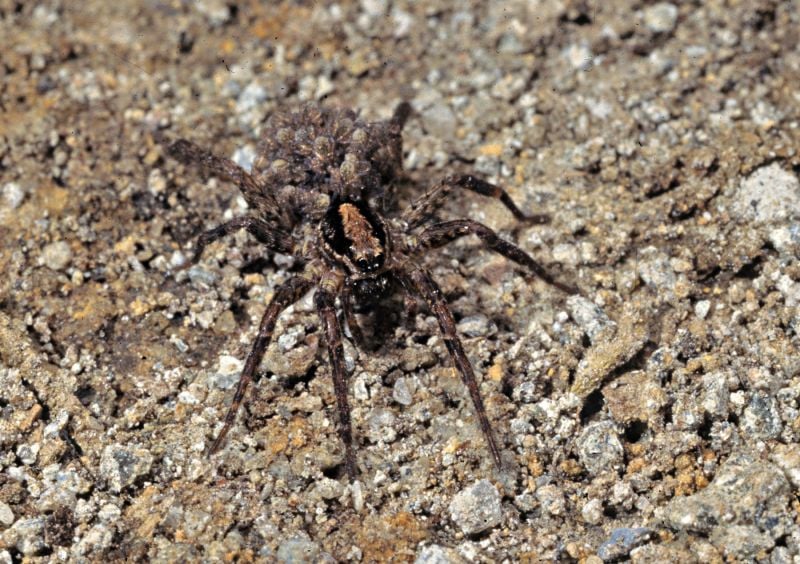Wolf Spider Las Vegas | Green Wave Pest Solutions
Home » Blog » Wolf Spider Las Vegas | Green Wave Pest Solutions
Las Vegas Pest Control Companies
Wolf Spider Las Vegas

Wolf spiders resemble nursery web spiders (family Pisauridae). They’re big, hairy, fast, and only slightly smaller than the tarantula, which is a more well-known big-screen star. Wolf spiders can be found in a wide range of habitats, including deserts, swamps, mountains, and forests. They eat anything they can get their hands on, and they aren’t afraid to eat other wolf spiders. These predatory pests are ferocious hunters who are averse to releasing their prey after capturing it.
Because of its hot climate, Nevada is an ideal place for certain spiders to thrive. Many of the spiders that live in Nevada are harmless to humans, but a few do have venomous bites that can really hurt. Knowing what kinds of spiders live in your area can help you determine whether or not a spider you come across is dangerous.
Big Wolf Spider Las Vegas
The bite of the wolf spider is venomous. Although the bite is not fatal, it can be extremely agonizing. In Las Vegas, the wolf spider is very common. It can be recognized by its hairy body. Wolf spiders are smaller versions of tarantulas that can grow up to 5-6 inches long. They have a brown camouflage color that blends well in desert settings. Wolf spiders are mostly nocturnal, but they can be active at any time of day or night. If they feel threatened or under pressure, wolf spiders will attack.

Wolf Spider Babies
Wolf spiders, like other venomous species, do not attack on sight, but if cornered or picked up, they will bite with a powerful bite. These spiders are known for their outside burrowing habits; they have also been known to burrow in residences, houses and under structures. Spiders are not afraid to hunt during the day, and it is not uncommon to come across one running through a human home. Their fangs are proportionally larger, and their bites are more painful as a result. Finding a wolf spider in your house, as well as its offspring, may go undetected for some time due to the lack of obvious signs like webs.
Humans are bitten by all spiders. It’s their instinctive reaction to danger. However, depending on their venom, some spiders are more dangerous than others.
Humans are not killed by wolf spiders (Lycosa), but they can bite and cause unpleasant symptoms. These spiders can be found all over the country.
Female Wolf Spider
Unless the epigynum, the area on the ventral surface (underside) of the female spider’s abdomen that contains the sperm, is visible, identifying the female spider can be difficult. While the spider is in a glass jar or vial, this can be done with a magnifying glass. The cephalothorax (front part of the body) is joined to the abdomen by this small, ductlike structure (back segment). Female wolf spiders carry their egg sacs on their abdomens and carry the spiderlings for a week or two after they hatch, sometimes hundreds at a time. Because male wolf spiders do not participate in the carrying of the young, this is a surefire way to identify a female wolf spider.
Wolf Spider Male vs Female
The front of the body of large male wolf spiders has bloated or enlarged pedipalps, or palps. These can be spotted near the front of the body, near the head. Females have pedipalps as well, but they are not bloated at the tips. The egg sacs of female wolf spiders are held on the abdomens of female wolf spiders.
Because wolf spiders aren’t poisonous to humans, a bite from one isn’t usually cause for alarm. Call your doctor if your symptoms worsen. You may be more sensitive to spider bite reactions and need to take extra precautions. This could indicate that the bite you thought was from a wolf spider was actually from another spider.
A wolf spider is a large, hairy spider. They have large, light-reflecting eyes. They range in length from 1/2 inch to 2 inches. Wolf spiders have color that is brownish to dark gray markings on their bodies.

Wolf Spider Eyesight
In the eyes, the tapetum lucidum is a retroreflective tissue. This reflective tissue is only present in the wolf spider’s four nonsmall eyes (“secondary eyes”). When a beam of light is flashed over a spider, it creates eyeshine, which can be seen when the illumination source is approximately coaxial with the viewer or sensor. The illumination from the light source (e.g., a spotlight or sunlight) has been mirrored directly back into the source by the spider’s eyes, resulting in a visible “glow.” Jumping spiders of the family Salticidae (which can discern colors) and huntsman spiders have the strongest eyesight of all spider classes, with wolf spiders finishing third.
Wolf Spider Aggresive
People are rarely bitten by wolf spiders. However, accidentally coming into contact with a wolf spider can result in a bite.
The bites of the wolf spider resemble those of other insects. A red bump that is itchy and swollen may appear. It usually disappears after a few days. It’s usually difficult to tell what bit you unless you actually see the wolf spider bite.
Mountains Edge Wolf Spider Bites Nevada
Spider bites can cause allergic reactions in some people. If you have any of the following symptoms, you should seek medical help right away.
a red line extending from the bite, which is also a sign of a blood infection.
Wolf spiders are notoriously difficult to eradicate because they must be physically or chemically contacted. Because this is a solitary spider that usually operates alone, the best method of control and elimination is to physically remove and/or kill the individual spider.
Seal cracks, crevices, gaps, and other openings in the home structure, foundation, and around doors and windows to help keep spiders out. Disposing of old papers and boxes, as well as keeping the house clean, can help to reduce the amount of shelter and harborage that spiders seek.

House Wolf Spider
To reduce existing spiders, some places recommend using an aerosol or indoor fog, in addition to environmental and structural modifications and sanitation. Read and follow all label directions before using any pesticide; make sure the site (indoor use, along foundations outside, etc.) is listed on the label; and only use products labeled for spiders or nuisance pests. You should also speak with a pest control professional at Green Wave Pest Solutions who can use or recommend a variety of chemical and non-chemical control methods as part of an Integrated Management Program.
Specific preventative actions, such as proper lawn and outdoor maintenance, can significantly reduce the likelihood of wolf spiders invading your home. Interaction is almost unavoidable whenever humans and other living things share the same environment. It does not, however, have to be life-changing. Simple attention to housekeeping and proper application of exclusion protocols can help limit and prevent human-spider contact. Professionals from Western Exterminator have been trained to provide important wolf spider prevention advice to homeowners and business owners.
How To Kill A Wolf Spider
Wolf spiders prefer dark, shady areas, and while their bites are not life-threatening, they are painful, and the mere thought of being bitten by one of these terrifying-looking creatures can make even the bravest of souls feel uneasy. Professional assistance is the most effective way to eradicate Wolf spiders and prevent future problems. Our pest control experts at Green Wave Pest Solutions use a variety of treatment techniques to exterminate wolf spider Las Vegas infestations, including surveillance, removal, dust, and liquid applications.



